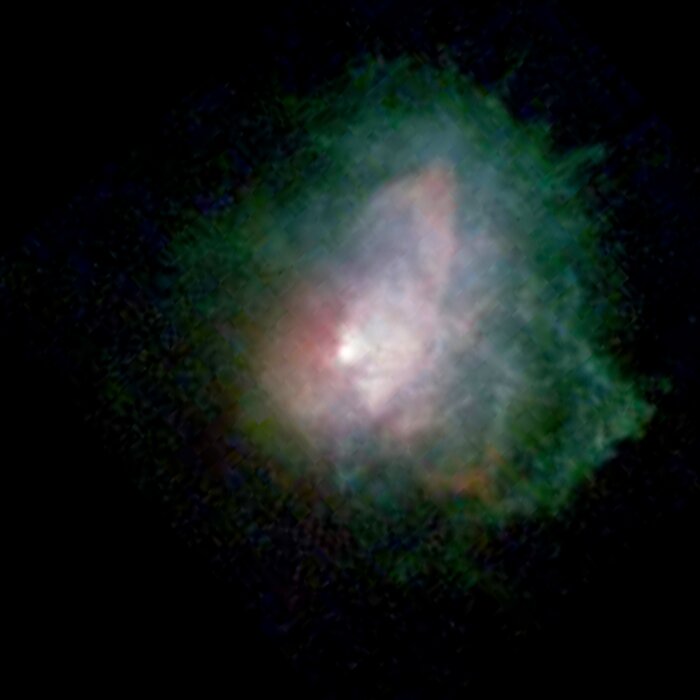Massive Star VY Canis Majoris - Visible Light
Using NASA's Hubble Space Telescope and the W.M. Keck Observatory, Kameula, Hawaii, astronomers have learned that the gaseous outflow from one of the brightest super-sized stars in the sky is more complex than originally thought.
The outbursts are from VY Canis Majoris, a red supergiant star that is also classified as a hypergiant because of its very high luminosity. The eruptions have formed loops, arcs, and knots of material moving at various speeds and in many different directions. The star has had many outbursts over the past 1,000 years as it nears the end of its life.
Credit:About the Image
About the Object
| Name: | HD 58061, HIP 35793, VY Canis Majoris |
| Type: | Milky Way : Star : Evolutionary Stage : Red Supergiant |
| Distance: | 3500 light years |
| Constellation: | Canis Major |
| Category: | Stars |
Wallpapers
Coordinates
| Position (RA): | 7 22 58.33 |
| Position (Dec): | -25° 46' 3.22" |
| Field of view: | 0.26 x 0.26 arcminutes |
| Orientation: | North is 41.0° left of vertical |
Colours & filters
| Band | Wavelength | Telescope |
|---|---|---|
| Optical B | 410 nm |
Hubble Space Telescope
WFPC2 |
| Optical V | 547 nm |
Hubble Space Telescope
WFPC2 |
| Optical (H-alpha+Near-IR) |
Hubble Space Telescope
WFPC2 |


